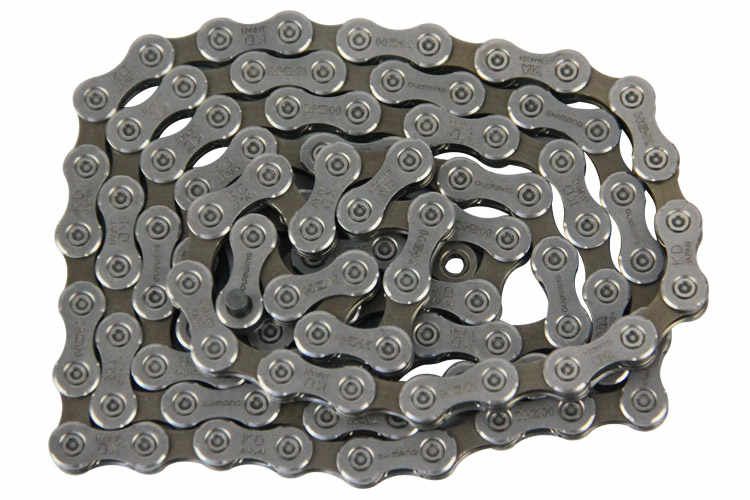In recent years, Shimano has been producing chains of the following types: Super narrow HG, designed for mounting on bicycles with 9-star cassettes, HG (Narrow HG) and IG (Narrow IG), designed cassettes for 8 and 7 stars. Sometimes, on the cheapest bicycles equipped with Shimano Tourney ratchets, UG-30 or UG-50 chains (6-7 stars) are also found, which are theoretically designed for use on smooth stars. A digital index in the marking, for example, IG-70, indicates the class of the chain: the larger the number, the better and more expensive the chain.
SRAM production chains include information about the number of gears and chain class in a digital index, for example, PC-68: the first digit indicates the class of the chain, the second indicates the number of gears, in this case 8. Now SRAM produces chains at 9, 8, 5- 7 and 1 driven star. KMC divides its products into chains for 9, 8, 7, 6 and 1 driven star. The wear resistance of the chain, its weight, strength and corrosion resistance are influenced by such parameters as the material of which the chain is made, surface heat and chemical treatment and the presence of spraying.
Very approximately the class of the chain can be judged (although this is not always an indicator) by its color. Low-level chains have a black surface on the side plates (blackening, burnishing). Mid-level chains are white and shiny (nickel plating), high – matte gray.
True, Shimano claim that the chains of other manufacturers are not compatible with their stars, but this, however, has no basis. SRAM and KMC write about the complete interchangeability of their chains with Shimano chains, except as otherwise specified. Looking at how bicycle manufacturers mix all these components without any noticeable damage to the quality of work, it can be argued that they are still interchangeable. Now about the differences.
The chains of these manufacturers vary in type of connection. Shimano chains do not have a link at all. When installing such a chain on a bicycle, a special tool is necessary – a squeeze, with which one of the connecting pins (rivets, pins, as they are also called) is pressed into place or pressed out when removed. With all the new Shimano chains, there are a pair of special connecting pins that have a guide nose that makes it easier to put the pin in place.
After installation, this nose breaks off. For chains designed for 8 and 9 stars, the connecting pins are different: pins with black heads are designed for chains of 8 stars (IG), with silver ones – for 9 (Super narrow HG). Many cyclists believe that it is better to use standard pins, squeezed out of the chain when shortening it to the required length, so that there are no problems with the selection of pins. At least that is how any circuit is repaired in the event of a break in operation.
Attention! When disassembling the chain, you cannot squeeze the pins with break-off noses, since when they are installed, the holes in the cheeks increase slightly and these pins wear out more than usual, therefore, their secondary use or the use of a standard pin in this place is likely to cause you to tear the chain easily enough.


